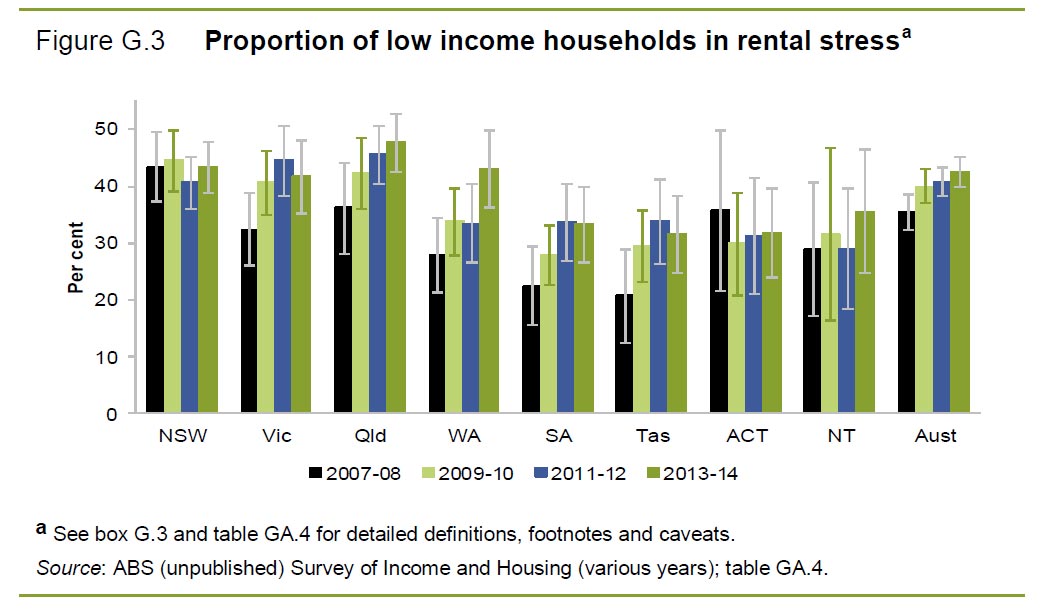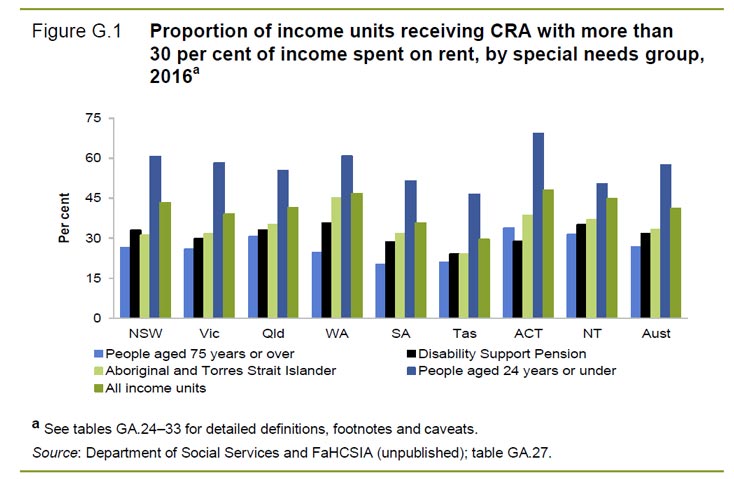The latest report from the Productivity Commission “Report on Government Services 2017, Volume G: Housing and homelessness” shows rental stress is on the rise. Nationally, the proportion of low income renter households in rental stress increased from 35.4 per cent in 2007-08 to 42.5 per cent in 2013-14.
 This is an indirect, but significant impact of the ever rising un-affordable housing burden.
This is an indirect, but significant impact of the ever rising un-affordable housing burden.
In addition, the report included data on Commonwealth Rent Assistance (CRA) showing a rise in payment to reduce rental stress, of $4.4 billion in 2015-16. A further hidden impact of high housing costs.
CRA helps eligible people meet the cost of rental housing in the private market, aiming to reduce the incidence of rental stress. It is an Australian Government non-taxable income supplement, paid to recipients of income support payment, ABSTUDY, Family Tax Benefit Part A, or a Veteran’s service pension or income support supplement.
Australian Government expenditure on CRA was $4.4 billion in 2015-16, increasing in real terms from $3.6 billion in 2011-12. The average government CRA expenditure per eligible income unit was $3251 in 2015-16.
Nationally in June 2016, there were 1 345 983 income units receiving CRA . Of these, 79.4 per cent paid enough rent to be eligible to receive the maximum rate of CRA (an increase from 75.0 per cent in 2012).
The median CRA payment at June 2016 was $130 per fortnight, with median rent being $437 per fortnight.
CRA and rental stress
Rental stress is defined as more than 30 per cent of household income being spent on rent, and is a separate sector-wide indicator. CRA is indexed to the Consumer Price Index (CPI) but rental costs have increased at a faster rate than the CPI since 2008 (ABS 2016), so the real value of CRA payments has decreased for individuals in that time.
Nationally in June 2016, 68.2 per cent of CRA income units would have paid more than 30 per cent of their gross income on rent if CRA were not provided — with CRA this proportion was 41.2 per cent.
The table below presents a range of CRA data, including Australian Government expenditure and information on CRA income units — including Aboriginal and Torres Strait Islander recipients, those with special needs — and those in rural and remote areas.


One thought on “Rental Stress Now Hits 42.5% of Low Income Households”